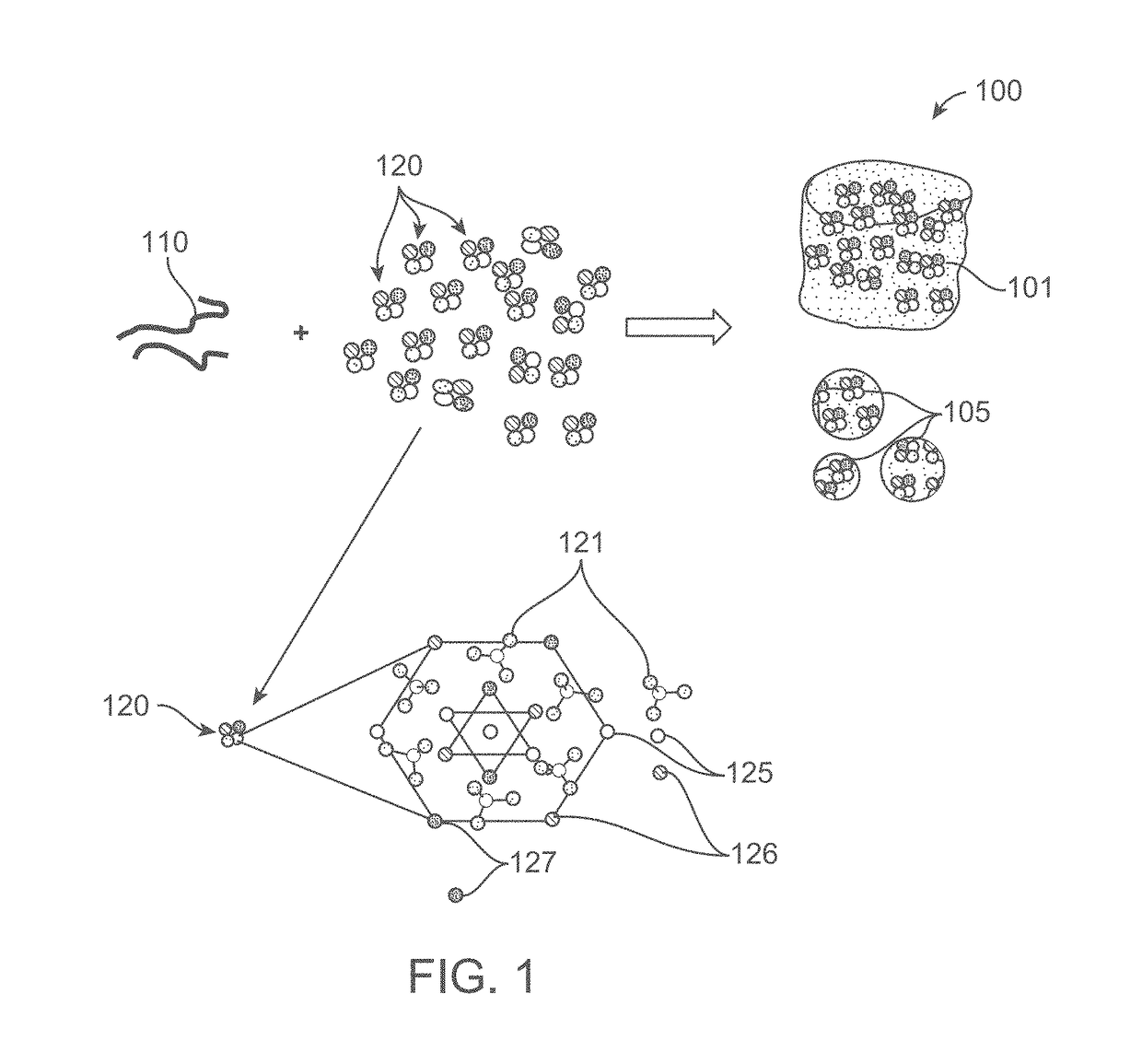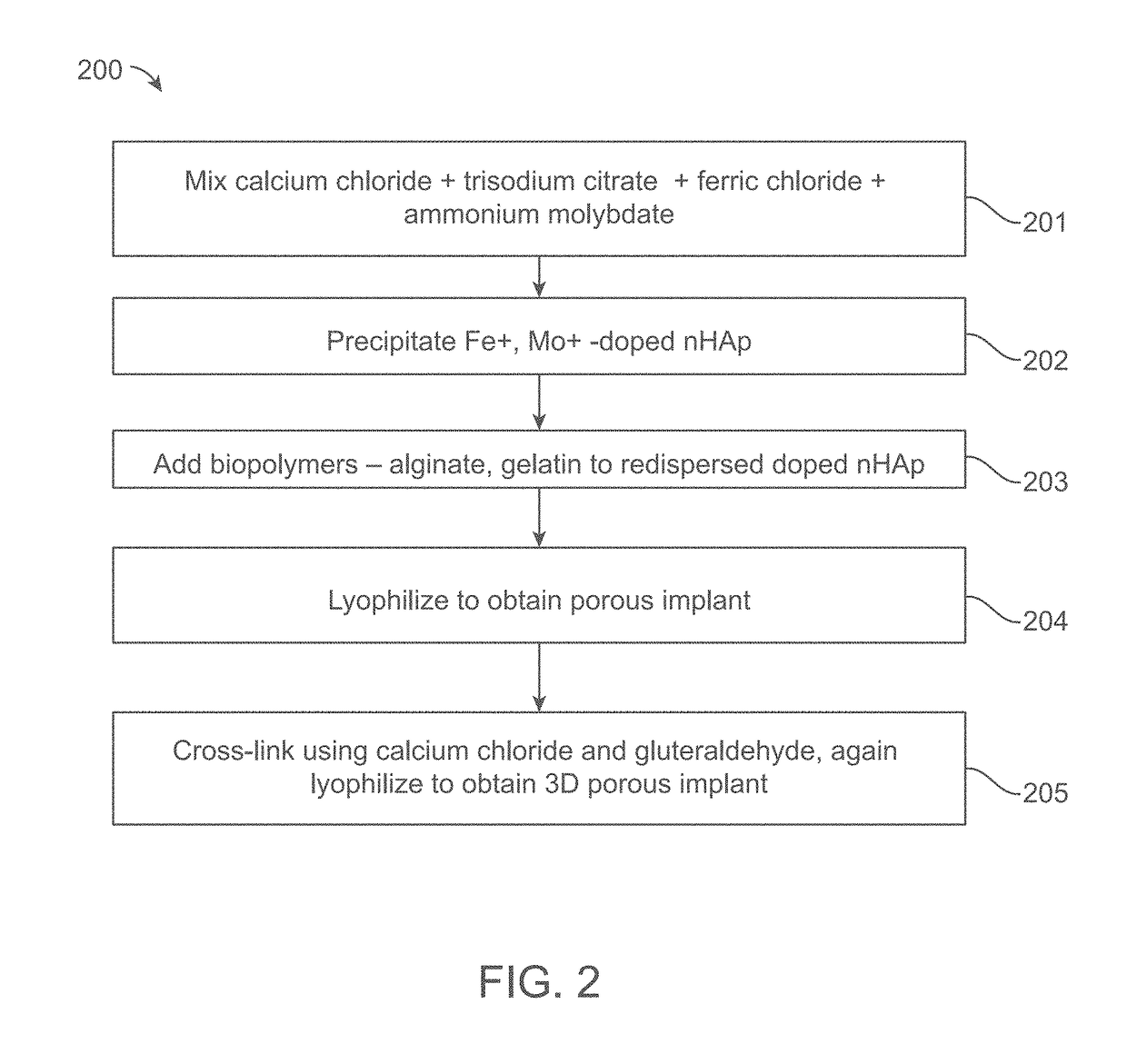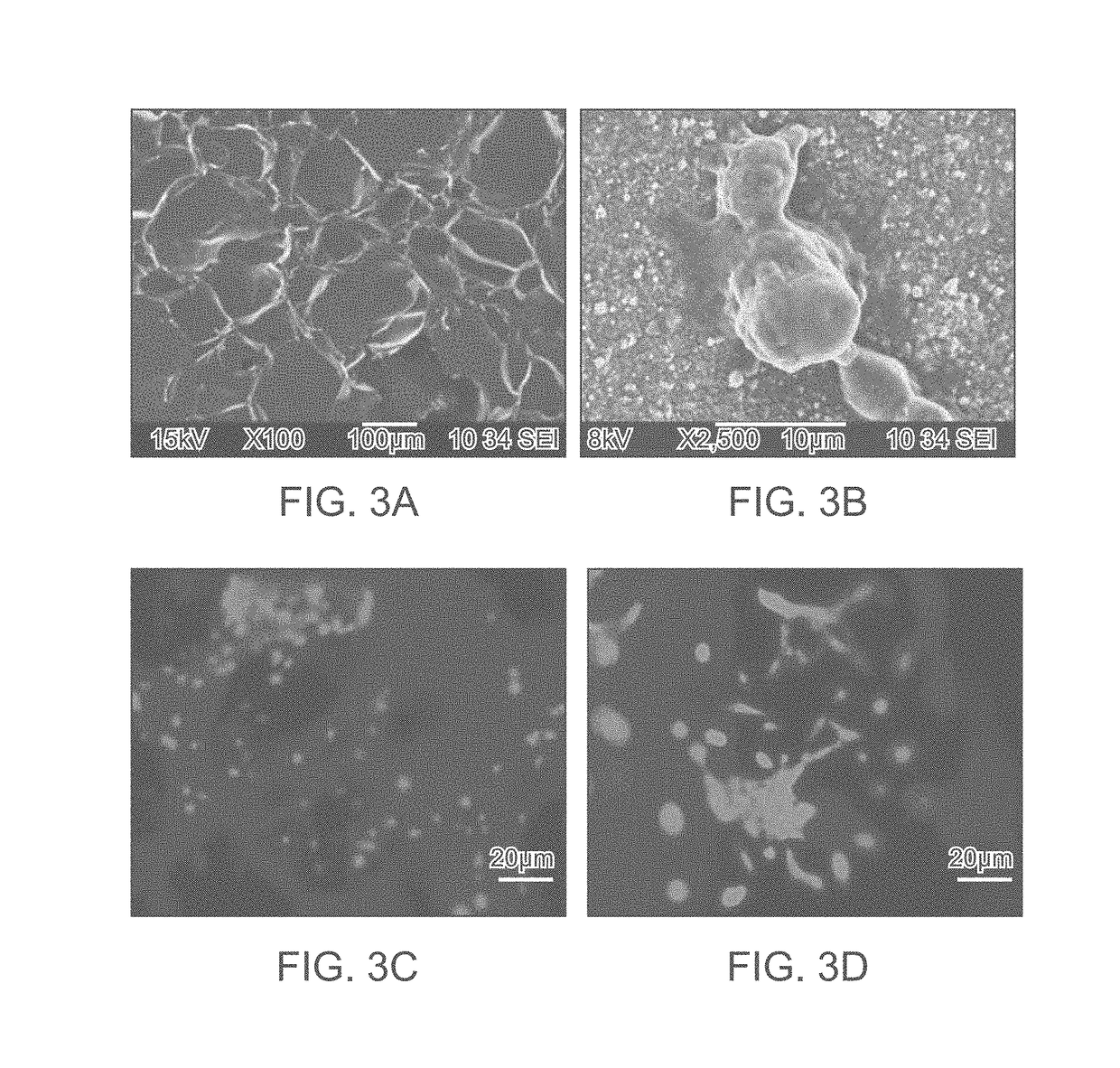MRI and ct contrast-enabled composite implants for image-guided tissue regeneration and therapy
a tissue regeneration and composite implant technology, applied in the field of composite implants for tissue regeneration, can solve the problem of restricting the application of mri and ct for tissue regeneration
- Summary
- Abstract
- Description
- Claims
- Application Information
AI Technical Summary
Benefits of technology
Problems solved by technology
Method used
Image
Examples
example 3
ization of 3-D Scaffold / Bead
[0057]Porous morphology of the developed scaffold is evident from SEM image in FIG. 3A. Pore size of the scaffold ranging from 150-200 μm, as shown in FIG. 3A, facilitates cell growth and proliferation. FIGS. 3B and 3C represent SEM images of mesenchymal stem cells (MSCs) attachment and cell spreading using nuclear staining with DAPI on the scaffold respectively. FIG. 3D represents live / dead imaging of MSCs proving the biocompatibility of the scaffold.
[0058]Nano- or micro-doped HAp incorporated scaffold provides an enhanced T2 contrast compared to undoped scaffold due to the T2 shortening by Fe3+ ions. FIG. 4A shows the change in MRI contrast with increasing concentration of doped nano-micro HAp from 0-50% and FIG. 4B represents CT images of 3-D scaffold showing change in contrast with respect to incorporation of nano- or micro-particle doped HAp.
[0059]FIG. 5A shows photograph of phantom bone sample filled with doped beads 105. FIG. 5B is a sagittal secti...
PUM
| Property | Measurement | Unit |
|---|---|---|
| size | aaaaa | aaaaa |
| time | aaaaa | aaaaa |
| magnetic resonance imaging | aaaaa | aaaaa |
Abstract
Description
Claims
Application Information
 Login to View More
Login to View More - R&D
- Intellectual Property
- Life Sciences
- Materials
- Tech Scout
- Unparalleled Data Quality
- Higher Quality Content
- 60% Fewer Hallucinations
Browse by: Latest US Patents, China's latest patents, Technical Efficacy Thesaurus, Application Domain, Technology Topic, Popular Technical Reports.
© 2025 PatSnap. All rights reserved.Legal|Privacy policy|Modern Slavery Act Transparency Statement|Sitemap|About US| Contact US: help@patsnap.com



